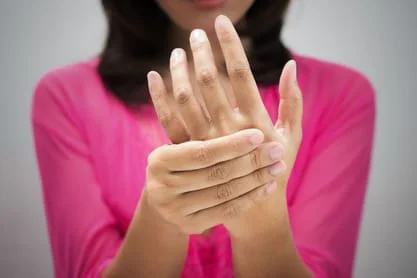Arthritis is a common condition characterized by inflammation and stiffness in the joints, often accompanied by pain and reduced mobility. While there is no cure for arthritis, various strategies can help manage symptoms and improve quality of life. In this comprehensive guide, we’ll explore effective techniques for easing arthritis pain, from lifestyle modifications and exercise to medication and alternative therapies. By understanding the underlying causes of arthritis pain and implementing targeted interventions, individuals can find relief and enjoy a better quality of life.
Types of Arthritis:
- Arthritis encompasses a group of more than 100 different types of joint diseases, with osteoarthritis and rheumatoid arthritis being the most common.
- Osteoarthritis is characterized by the breakdown of cartilage in the joints, leading to pain, stiffness, and decreased range of motion.
- Rheumatoid arthritis is an autoimmune disorder that causes inflammation in the lining of the joints, resulting in pain, swelling, and joint deformity.
Causes of Arthritis Pain:
- Arthritis pain is primarily caused by inflammation and damage to the joints, leading to irritation of surrounding tissues and nerves.
- Factors such as age, genetics, obesity, joint injury, and repetitive stress can contribute to the development and progression of arthritis pain.
- Effective Strategies for Easing Arthritis Pain:
Medication Management:
For individuals experiencing moderate to severe arthritis pain that is not adequately managed with over-the-counter medications or nonsteroidal anti-inflammatory drugs (NSAIDs), prescription muscle relaxants like Pain O Soma 500 mg and Pain O Soma 350 mg. Pain O Soma is a brand name for the muscle relaxant medication carisoprodol, which is commonly prescribed to relieve muscle spasms and associated discomfort.
Physical Therapy:
Physical therapy plays a crucial role in managing arthritis pain by improving joint flexibility, strength, and function.
- A physical therapist can develop a personalized exercise program tailored to the individual’s specific needs and abilities, incorporating activities such as stretching, strengthening exercises, and low-impact aerobic workouts.
- Hydrotherapy, or water-based exercise, can be particularly beneficial for individuals with arthritis, as the buoyancy of water reduces stress on the joints while providing resistance for muscle strengthening.
Weight Management:
- Maintaining a healthy weight is essential for managing arthritis as excess weight can increase stress on the joints and exacerbate symptoms.
- Adopting a balanced diet rich in fruits, vegetables, whole grains, and lean proteins can help support weight loss and reduce inflammation in the body.
- Working with a registered dietician or nutritionist can provide guidance on healthy eating habits and strategies for managing arthritis through diet.
Assistive Devices and Adaptations:
- Assistive devices, such as braces, splints, and orthotic shoe inserts, can help support and stabilize affected joints, reducing pain and improving function.
- Adaptive tools and modifications to the home environment, such as grab bars, elevated toilet seats, and ergonomic furniture, can make daily tasks easier and less painful for individuals with arthritis.
Stress Management:
- Stress can exacerbate arthritis symptoms by triggering inflammation and increasing muscle tension.
- Mind-body techniques such as meditation, deep breathing exercises, and progressive muscle relaxation can help reduce stress and promote relaxation, potentially alleviating arthritis pain.
- Engaging in enjoyable activities, hobbies, and social connections can also provide emotional support and distraction from pain.
Alternative Therapies:
- Alternative therapies such as acupuncture, massage therapy, and chiropractic care may offer additional relief for arthritis pain by targeting trigger points, reducing muscle tension, and promoting circulation.
- Herbal supplements and topical treatments containing ingredients such as capsaicin, glucosamine, or turmeric may also provide symptomatic relief for some individuals, although more research is needed to confirm their effectiveness.
Surgical Intervention:
- In severe cases of arthritis where conservative treatments are ineffective, surgical intervention may be considered to repair or replace damaged joints.
- Common surgical procedures for arthritis include arthroscopic surgery, joint fusion, and joint replacement surgery, which can help alleviate pain and restore function in the affected joint.
Conclusion:
Arthritis pain can significantly impact daily functioning and quality of life, but with the right strategies and interventions, individuals can find relief and regain control over their symptoms. By incorporating medication management, physical therapy, weight management, assistive devices, stress management techniques, alternative therapies, and surgical intervention as needed, individuals can effectively manage arthritis pain and improve overall well-being. It’s essential to work closely with healthcare providers to develop a comprehensive treatment plan tailored to individual needs and preferences, ensuring the best possible outcomes for long-term pain relief and mobility.









